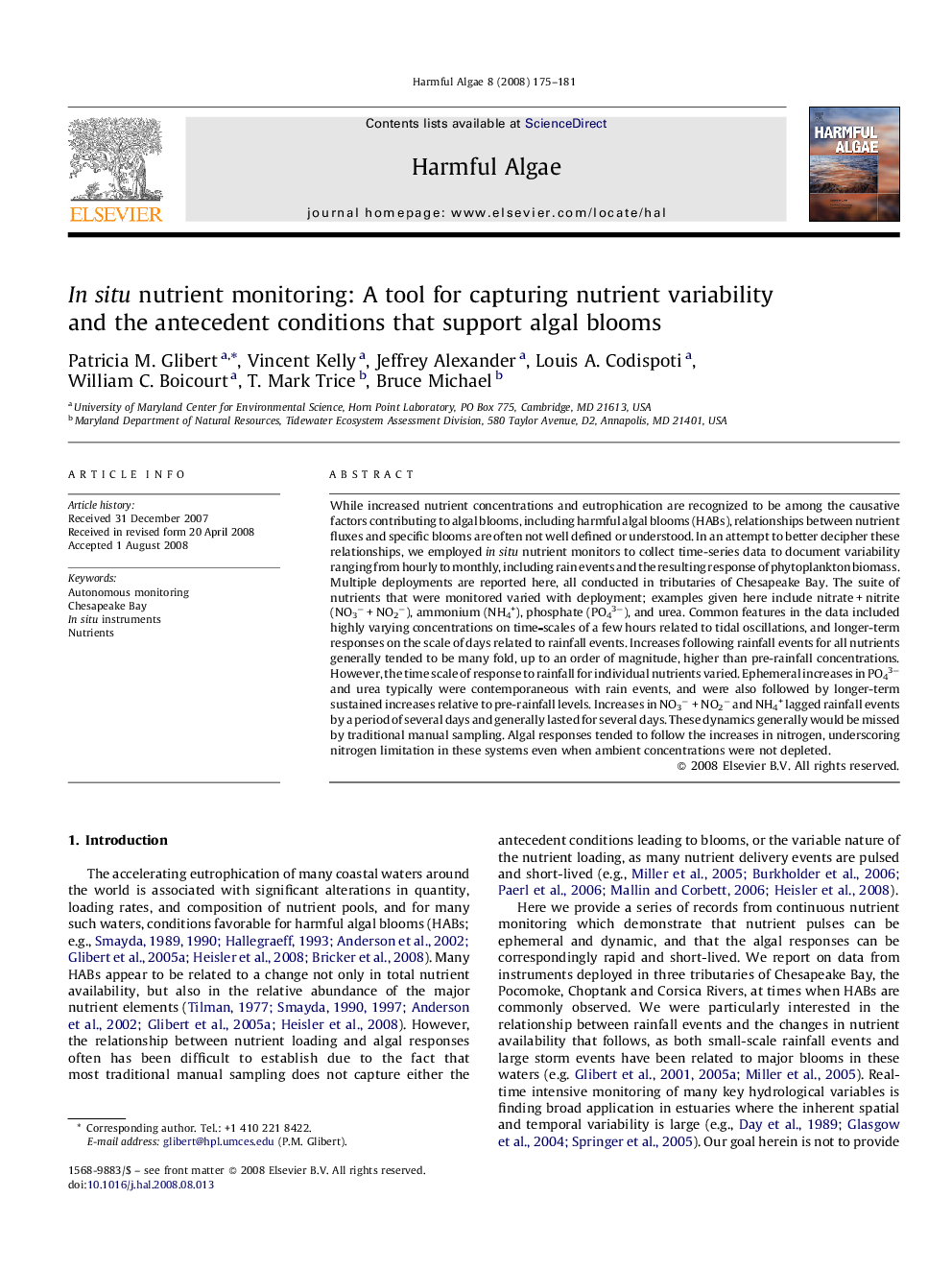| Article ID | Journal | Published Year | Pages | File Type |
|---|---|---|---|---|
| 4545930 | Harmful Algae | 2008 | 7 Pages |
While increased nutrient concentrations and eutrophication are recognized to be among the causative factors contributing to algal blooms, including harmful algal blooms (HABs), relationships between nutrient fluxes and specific blooms are often not well defined or understood. In an attempt to better decipher these relationships, we employed in situ nutrient monitors to collect time-series data to document variability ranging from hourly to monthly, including rain events and the resulting response of phytoplankton biomass. Multiple deployments are reported here, all conducted in tributaries of Chesapeake Bay. The suite of nutrients that were monitored varied with deployment; examples given here include nitrate + nitrite (NO3− + NO2−), ammonium (NH4+), phosphate (PO43−), and urea. Common features in the data included highly varying concentrations on time-scales of a few hours related to tidal oscillations, and longer-term responses on the scale of days related to rainfall events. Increases following rainfall events for all nutrients generally tended to be many fold, up to an order of magnitude, higher than pre-rainfall concentrations. However, the time scale of response to rainfall for individual nutrients varied. Ephemeral increases in PO43− and urea typically were contemporaneous with rain events, and were also followed by longer-term sustained increases relative to pre-rainfall levels. Increases in NO3− + NO2− and NH4+ lagged rainfall events by a period of several days and generally lasted for several days. These dynamics generally would be missed by traditional manual sampling. Algal responses tended to follow the increases in nitrogen, underscoring nitrogen limitation in these systems even when ambient concentrations were not depleted.
